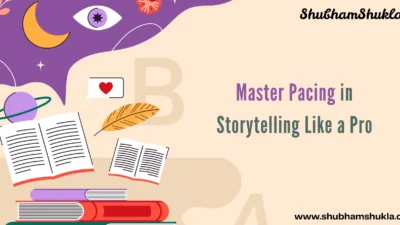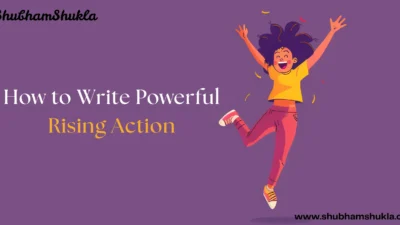Have you ever started reading a novel and felt instantly swallowed by the character’s world? That’s the power of point of view in fiction—the invisible lens through which we experience every emotion, scene, and twist. It’s more than pronouns; it’s perspective, empathy, and narrative heartbeat all wrapped in voice.
Choosing the right POV can feel daunting. But here’s the thing: picking the most intuitive point of view in fiction isn’t about following rules—it’s about tuning in to your story’s voice and trusting your gut.
- Why Point of View in Fiction Shapes Everything
- Exploring Your Options: Types of Point of View
- Choosing the Right Point of View: What Works for Your Story
- Changing Point of View Mid‑Draft? Totally Doable
- How Point of View Influences Plot and Structure
- Real Writer Challenges & What to Watch
- Literary Examples That Stoke Inspiration
- Final Thoughts: Point of View Isn’t a Trick—it’s Your Narrative Soul
- FAQ — Navigating Point of View Confusion
Why Point of View in Fiction Shapes Everything
Consider To Kill a Mockingbird. Told through young Scout’s first-person perspective, it feels tender, earnest, and sharply observant. Her naïve but insightful voice transforms that dusty southern town into something unforgettable.
That’s why point of view in fiction matters: it shapes emotional tone, conveys bias, and determines what readers see—and when.
Switching that to third-person omniscient? You’d lose Scout’s immediacy. Every character shift would feel colder, more distant. The choice of POV impacts not just style, but meaning.
You may also read: How to Write a Character Backstory That Actually Matters
Exploring Your Options: Types of Point of View
First-Person POV
Uses “I” and “my”. Offers deep emotional intimacy, but only from one character’s mind. Think The Great Gatsby—Nick’s filtered perspective colors everything. You get tone, layered with character judgment and uncertainty.
Third-Person Limited POV
Uses “he”, “she”, or “they”, typically filtered through a single character per scene. This is common in modern fiction. Harry Potter uses mostly Harry’s perspective, which keeps us grounded—even during magical chaos.
Third-Person Omniscient / Multiple POVs
Offers broader scope—switching between characters or viewpoints. A Game of Thrones does this elegantly. You inhabit different heads in separate chapters, and each voice adds urgency or context to the story’s unfolding.
Second-Person POV (rare)
Uses “you”. It’s uncommon, but powerful when done well—like in Margaret Atwood’s The Handmaid’s Tale, where the narrator addresses a broader audience, creating intimacy plus distance.
You may also like: MBTI Characters: Unlocking the Personality Puzzle in Fiction
Choosing the Right Point of View: What Works for Your Story
Match POV to Genre and Tone
If you’re writing a character-driven romance, first-person or multiple third-person POV could bring emotional depth. A thriller might benefit from limited third-person to pace reveals. For sweeping fantasy or high-stakes ensembles, multiple POVs may work best.
Grab a Scene and Test It
Try writing your favorite emotional scene in two or three POVs. Read each version out loud. Which one feels truer to your voice? That exercise helps clarify your instinct.
Avoid Common Missteps
- Head-hopping: jumping between characters in the same scene can disorient readers.
- Tone drift: maintaining consistent voice per POV is crucial.
- Info dumping: one POV shouldn’t reveal knowledge other characters wouldn’t have.
Changing Point of View Mid‑Draft? Totally Doable
“In my own experience, I found that…” rewriting the opening scene of my fantasy draft in first-person instead of third transformed it entirely. The voice came alive.
The emotional stakes felt palpable. If you write a scene one way, step away. Return later in a different point of view. That shift might breathe life into a sluggish draft.
You may also like: The Power of Three: Writing with 3 Main Characters That Truly Shine
How Point of View Influences Plot and Structure
Control What Readers Know
In third-person limited POV, you can hide information until your protagonist learns it—and that builds suspense. In fantasy, revealing secrets too early can kill mysteries. POV shapes pacing.
Multiple Voices Bring Dimension
When readers get multiple POVs across chapters, the story expands. They see political intrigue from one character and emotional struggle from another—like in The Night Circus, where overlapping perspectives enrich the world.
One POV Can Anchor Entire Plot
Some stories thrive with a single anchor character’s growth arc. Think Elizabeth Bennet in Pride and Prejudice. Every scene’s filtered through her interpretation—and it works beautifully.
Real Writer Challenges & What to Watch
- Accidental POV slips: abruptly shifting from one character’s internal voice to another’s mid-scene. It jars readers.
- Weak internal voice: a bland first-person narrator can feel shallow—lack emotion, inner conflict, or personality.
- Too many POVs: juggling too many voices, especially as a new writer, can dilute your story’s focus.
You may also like: Villain vs Antagonist: Why Understanding the Difference Can Level Up Your Storytelling
Literary Examples That Stoke Inspiration
- Rebecca by Daphne du Maurier is narrated in first-person, but the narrator is unnamed—and unreliable. That POV choice keeps tension high and voice mysterious.
- Gone Girl alternates between Nick and Amy’s first-person narration—showcasing how multiple POVs can twist timelines, reliability, and reader perception.
- The Goldfinch by Donna Tartt uses limited third-person filtered through Theo. We feel his trauma and growth deeply, without hearing multiple perspectives. Even quiet POV can be immersive.
You may also read: Small Roles, Big Impact: Writing Scene Characters That Matter
Final Thoughts: Point of View Isn’t a Trick—it’s Your Narrative Soul
The point of view in fiction is less about rules and more about resonance—your story’s emotional core, your reader’s eyes, and your character’s truth. Pick the POV that lets your voice shine.
It’s okay to experiment. Trust your instincts. Your story deserves the clarity—and connection—that comes from choosing the right narrative vantage point.
If you’re unsure: test it, live in it for a chapter or scene, then commit. Your path may change—and that’s fine. What matters is how your story comes alive through its lens.
FAQ — Navigating Point of View Confusion
Can I switch POV mid-novel?
Yes—if done cleanly. Don’t mix POVs in one scene. Use chapter breaks and signal clearly
Is first or third better?
Neither is inherently better. First-person offers intimacy; third-person limited offers flexibility. Choose what serves your voice best.
Can we write in 3rd-person omniscience?
Absolutely, but it requires finesse. Use multiple POVs with purpose and keep transitions clear.
How do I know if POV is working?
Readers staying engaged is your clue. If feedback says “I didn’t connect with the narrator,” consider adjusting POV or voice.
Choosing your point of view in fiction isn’t about rules—it’s about finding the voice that feels truest to your story. Here’s to finding yours, telling your story your way, and welcoming readers into a world only you could imagine.



